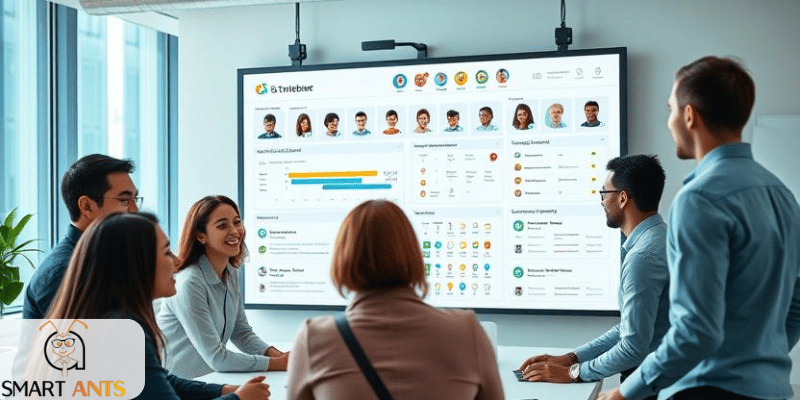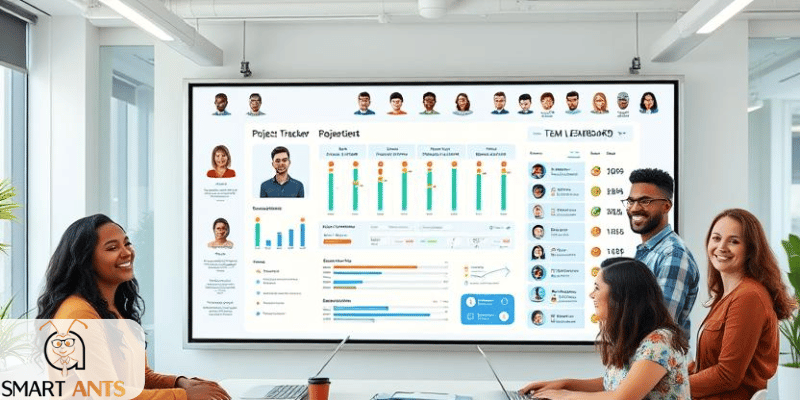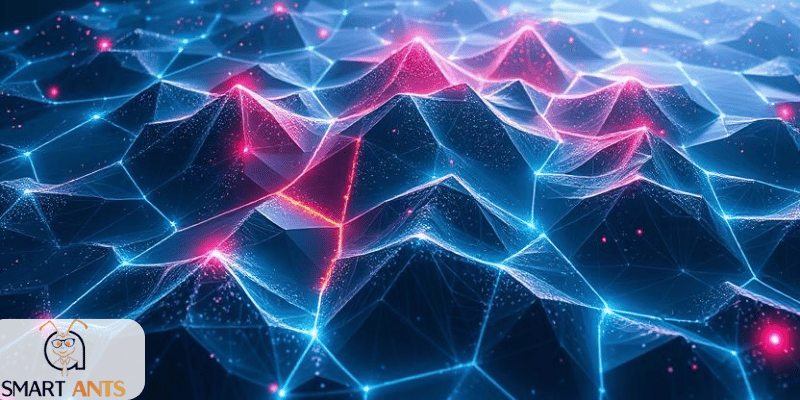The Impact of Gamification in Business: Increasing Engagement, Loyalty, and Sustainable Growth
In today’s competitive world, businesses are constantly looking for new ways to attract the attention of their audience, increase customer loyalty, and improve employee productivity. Gamification, as a powerful strategy, has been able to create a significant transformation in these areas by applying game design elements and thinking in non-game environments. This approach is no longer an abstract concept or a fleeting trend, but a practical and proven tool that can have tangible and positive effects on various aspects of a business. In this article, we will delve deep into the impact of gamification in business, from increasing employee motivation to strengthening customer relationships and, ultimately, achieving sustainable growth.
Why Are Businesses Turning to Gamification?
Several reasons are driving businesses to adopt gamification strategies:
- Increased Competition: In saturated markets, differentiation and attracting attention are more difficult than ever. Gamification offers a creative way to stand out.
- Changing Customer and Employee Expectations: The new generation of customers and employees (especially Millennials and Gen Z) have grown up with digital games and expect more interactive and engaging experiences.
- Need for Sustainable Motivation: Traditional motivation methods may lose their effectiveness in the long run. Gamification, by focusing on intrinsic and extrinsic motivations, can create more sustainable engagement.
- The Power of Data: Gamified systems can collect a large amount of behavioral data from users, which is very valuable for analysis and improving strategies.

Part One: The Impact of Gamification on Human Resources and Organizational Culture
One of the most important areas where gamification can create transformation is human resource management and improving the internal culture of the organization.
1. Significant Increase in Employee Engagement and Motivation
Unmotivated and inactive employees impose many hidden costs on the organization. Gamification, by creating a more dynamic and entertaining work environment, can significantly increase employee motivation and participation.
- Effective Mechanics: Setting clear goals, providing immediate feedback, scoring systems, badges, leaderboards for tasks and projects, and creating team challenges.
- Results: Employees perform their tasks with more enthusiasm, feel a greater sense of belonging to the organization, and make extra efforts to achieve individual and team goals.
2. Improving Employee Onboarding & Training Processes
Traditional and lengthy training sessions are often boring and have low learning rates. Gamification can turn the learning process into an engaging and interactive experience.
- Approaches: Turning educational content into phased adventures, using simulations and game-like scenarios to practice skills, awarding certificates and badges upon successful completion of courses.
- Example: Deloitte, with its gamified learning platform (Deloitte Leadership Academy), was able to reduce the time required to complete courses by up to 50% and significantly increase user participation.
- Results: Increased learning speed, improved retention of material, and increased employee willingness to participate in training programs.
3. Strengthening Teamwork and Collaboration
Many gamified systems emphasize collaboration and healthy team competition. This can help improve communication and synergy among team members.
- Mechanics: Group challenges, shared team goals, reward systems for team achievements.
- Results: Creating a friendlier work environment, breaking down organizational silos, and increasing creativity through collaboration.
4. Promoting Innovation and Problem Solving
Gamification can encourage employees to think outside the box and offer creative solutions to problems.
- Approaches: Creating platforms for submitting new ideas with a scoring and reward system for the best ideas, holding innovation competitions with specific challenges.
- Results: Increased number of innovative ideas, improvement of existing processes, and creation of a culture of accepting smart risks.

Part Two: The Impact of Gamification on Customers and Marketing Strategies
Attracting and retaining customers is the lifeblood of any business. Gamification offers powerful tools to achieve these goals.
1. Significant Increase in Customer Loyalty and Retention
The cost of acquiring a new customer is several times the cost of retaining an existing one. Gamified loyalty programs can significantly increase customer retention rates.
- Effective Mechanics: Points systems for purchases, different membership levels with increasing benefits, special badges for loyal customers, shopping challenges and missions.
- Example: The Starbucks Rewards program, with its star system and offering free drinks, is a successful example of a gamified loyalty program with millions of active customers.
- Results: Increased purchase frequency, increased customer lifetime value (CLV), and creating a sense of belonging in customers.
2. The Impact of Gamification in Business: Improving Customer Experience (CX)
Gamification can make customer interactions with the brand more enjoyable and memorable. This leads to a more positive customer experience.
- Approaches: Gamifying the registration or profile completion process, providing interactive guides for using products, creating brand-related mini-games.
- Results: Reduced bounce rate on websites and applications, increased customer satisfaction, and receiving positive feedback.

3. Increasing Brand Engagement and Content Interaction
In a content-saturated world, grabbing the audience’s attention is difficult. Gamification can make your content more interactive and keep users engaged for longer.
- Mechanics: Gamified quizzes and polls, contests with prizes, unlockable content after performing a specific activity.
- Example: The language learning app Duolingo, by using points, stages, virtual powers (streaks), and leagues, encourages millions of users to learn languages daily.
- Results: Increased time spent by users on the platform, increased content sharing rate, and strengthened brand recognition.
4. Collecting Valuable Customer Data
Gamified systems naturally encourage users to provide information and perform specific activities. This data can be very useful for better understanding customer behavior and personalizing offers.
- Approaches: Offering rewards for completing surveys or sharing preferences.
- Results: Access to more accurate and first-hand customer data, better market segmentation, and improved targeting of marketing campaigns.
5. Lead Generation and Sales Increase
Gamified marketing campaigns can be an effective tool for attracting potential customers and guiding them towards purchase.
- Mechanics: “Refer a friend” contests with rewards, spin-a-wheel for discounts, interactive product demos.
- Results: Increased visitor-to-customer conversion rate, reduced cost of lead acquisition, and direct sales increase.

Part Three: Challenges and Considerations in Implementing Gamification
Despite its many benefits, successful implementation of gamification requires careful planning and attention to certain challenges:
- Poor Design: Superficial use of game elements (Pointsification) without a deep understanding of user motivations can have the opposite effect.
- Mismatch with Audience or Organizational Culture: The gamified solution must be consistent with the characteristics of the audience and the company culture.
- Over-Complexity: A very complex gamified system may confuse and discourage users.
- Overemphasis on Competition: Intense and unhealthy competition can lead to stress and reduced collaboration.
- Ethical Concerns: It must be ensured that gamification is not used to manipulate or exploit users.
- Cost and Implementation Time: Designing and implementing an effective gamified system may require initial investment.
Part Four: The Future of Gamification in Business
The future of gamification in the business world looks very bright. With advancements in technologies such as Artificial Intelligence (AI), Virtual Reality (VR), and Augmented Reality (AR), we will witness the emergence of more complex, personalized, and immersive gamified solutions.
- Deep Personalization: AI will enable gamified systems to dynamically adjust each user’s experience based on their behavior, preferences, and skill level.
- Immersive Experiences: VR and AR can take training, marketing, and customer service experiences to a new level of interaction and realism.
- Gamification for Social and Sustainability Goals: Businesses will increasingly use gamification to encourage sustainable behaviors among employees and customers, as well as to support social causes.

Conclusion: Gamification, a Smart Investment for Growth
The impact of gamification in business is no longer deniable. This approach, when implemented correctly and with strategic thinking, can become a powerful tool for increasing employee motivation and productivity, creating deep customer loyalty, strengthening the brand, and ultimately, achieving a sustainable competitive advantage. Businesses that understand the importance of meaningful interaction and enjoyable experiences will embrace gamification and benefit from its countless advantages. Gamification is not just a tactic, but a shift in mindset in how we interact with people – whether employees or customers.


